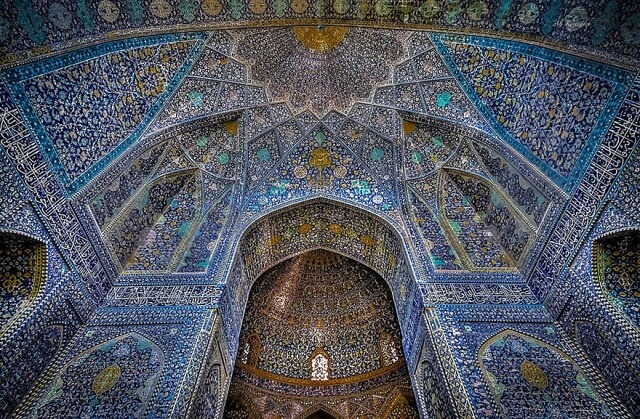The Symbolism of Islamic Geometric Patterns in Islamic Culture

It is well known that Islamic geometric patterns have a long history and that they have a strong presence in Islamic culture as well. Patterns such as these, which are often seen in Islamic art, architecture, and design, are not only visually stunning, but they also carry a deep meaning that is often reflected in their symbolism.
The purpose of this essay is to investigate the symbolism and meaning of Islamic geometric patterns in the context of Islamic culture. The geometric patterns of the Islamic faith are believed to symbolize the infiniteness of Allah and the interconnectedness between all things in the universe. It is also believed that they represent unity, balance, and harmony, all of which are important aspects of the Islamic faith. Lastly, these patterns are seen as a reminder that there is a divine order in the universe that is revealed in these patterns.
It is usually the case that Islamic geometric patterns are made up of repeating shapes such as circles, squares, and triangles, which are typically repeated. A complex design is often created by intricately combining these shapes to create a unique design. As early as the 7th century, when Islam emerged for the first time in the world, geometric patterns were used in Islamic art and architecture.
There is more to Islamic geometric patterns than just decoration; they also have meaning and symbolism that goes beyond the decorative. A geometric pattern is thought by many to represent the infinite nature of the universe and God’s power as well as the infinite nature of creation. There is also a sense of harmony and balance that is associated with Islamic culture, and this can be interpreted as well. The patterns, in addition to providing a constant reminder of the beauty of God’s creation, also act as an inspiration.
One of the most prominent symbolic elements in Arabesque art is unity. Islamic culture places a strong emphasis on unity and interconnectedness. Islamic geometric patterns often use repeating shapes and motifs to symbolize interconnectedness. For example, the repetition of circles in a geometric pattern represents the interconnectedness of the universe. In contrast, square repetition symbolizes the unity of the Islamic community.
Another significant symbolic element in Islamic geometric patterns is infinity. Islamic culture recognizes the infinite nature of the universe and the divine. Islamic geometric patterns often use repeating shapes and motifs to represent this infinite nature. For example, hexagon repetition in a geometric pattern symbolizes God’s limitless creation.
The Islamic geometric patterns also often use circles, which are a universal symbol of the divine. Circles are seen as having neither a beginning nor an end, which is a reminder of the infinite nature of God and of the universe.
Islamic geometric patterns also symbolize transcendence. Islamic culture recognizes the importance of transcending the material world to connect with the divine. Islamic geometric patterns often use complex designs and intricate details to represent transcendence’s spiritual journey.
For example, complex star patterns in Islamic art and architecture represent the journey toward spiritual enlightenment. The intricate details of these star patterns serve as a reminder of the spiritual journey we must undertake in order to achieve a deeper understanding of the divine.
Islamic art patterns also symbolize balance. Islamic culture recognizes the importance of balance in all aspects of life, from the physical to the spiritual. Islamic geometric patterns often use repeating shapes and motifs to represent this balance. For example, Islamic architecture uses repeating patterns to represent balance between form and function.
Islamic geometric patterns also carry strong symbolism related to the Islamic faith. For example, geometric patterns in Islamic calligraphy represent the importance of the written word in Islamic culture. The use of lattice patterns in Islamic architecture represents the importance of the mosque as a spiritual center for the Islamic community.
In conclusion, Islamic geometric patterns are not just visually stunning but also carry a deep symbolic meaning in Islamic culture. These patterns represent unity, infinity, transcendence, balance, and the Islamic faith. Islamic culture recognizes the importance of these concepts in all aspects of life, from the physical to the spiritual. Islamic geometric patterns serve as a visual reminder of these cherished values.
They also emphasize the importance of mathematics and the interconnectedness of all things in the world. These patterns are an integral part of Islamic culture and will continue to inspire people for generations.



